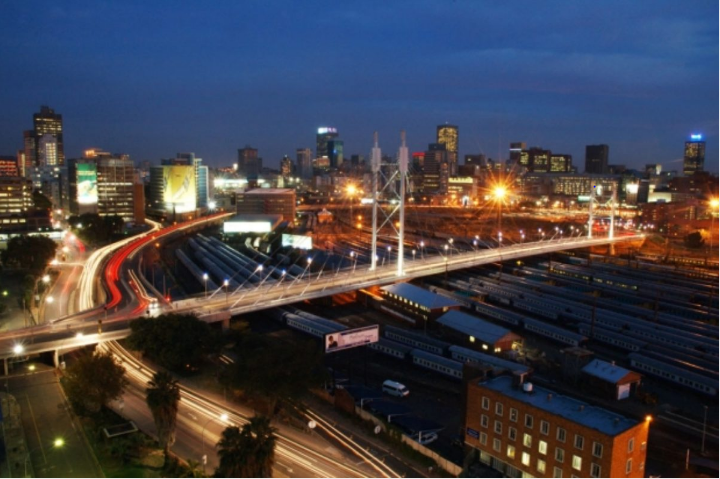Place image

The Nelson Mandela Bridge is a relatively new addition to the Johannesburg skyline, but has already gained iconic status, with an impressive 295 metre span that is lit up in all the colours of the rainbow at night. (It's one of the really striking attractions of Johannesburg!)
The Bridge, which spans the railway tracks which separate the Newtown and Braamfontein neighbourhoods in the Johannesburg City Centre took 18 months to build and was completed in 2003. It is the largest Cable-Stayed Bridge in Southern Africa. Designed by leading architectural firm, from Denmark- Dissing and Weitling, while construction was carried out by the South African National Roads Agency. The main contractor was Grinaker LTA. The bridge design contract was awarded to Denmark-based Dissing + Weitling in 2001. The Bridge was specially designed to be lightweight – a combination of structural steel and concrete composite deck ensures that it is as light as possible while offering stability and strength. The construction of the Bridge was part of a larger City project to rejuvenate and modernise the inner City and inspire both local and foreign visitors to the Johannesburg. It also has the advantage of providing an easy, convenient and safe way for residents to travel between the two Districts on foot or by car! (Some of the trendiest places to visit in Johannesburg, can be found in Newtown and Braamfontein.)
Construction of the Bridge proved to be operationally and logistically challenging: the engineering team had to devise a way to construct the Bridge across 42 Railway lines without disrupting rail traffic. According to Engineering News, about 4 000m3 of concrete and 1 000 tons of structural steel were used to construct the Bridge, with about 500 tons of reinforcing steel cast into the concrete.
The Bridge is named in honour of South Africa’s first Democratically Elected President and the structure itself is symbolic of Nelson Mandela’s role in bridging the apartheid divide and uniting South African society. In 2010 ahead of the World Cup the lighting on the bridge was upgraded and now every night the bridge is lit up in the colours of the rainbow.
You can enjoy excellent views of the city’s skyscrapers when driving across Nelson Mandela Bridge, or walking on one of its two pedestrian lanes. There is also a bicycle lane to ensure that cyclists are safe while navigating this busy city route. It is recommended that visitors who want to explore the bridge on foot do so only during the day.
Further Reading